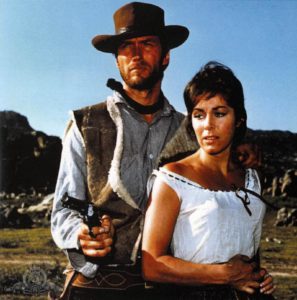When writing a play script, your script should include the settings, dialogue, and actions that take place throughout your play. This type of script outlines who says or does what when and how as well as describes the setting of the stage, like backdrops, lighting, and props. It is specifically for live visual stories on the stage, including dramas, comedies, and musicals.
How to write a play script
Before you get started, it’s important to understand the proper formatting of a play and what story elements you need to include. Follow these steps to write a play script:
Get inspiration
The first step is to read and watch as many plays as possible. During your research, take note of what other playwrights do well. If you notice dialogue you especially enjoy or useful stage directions, consider emulating them in your own play script. Reading a play first and then seeing a live performance of that play is a great way to see what a script can turn into.
Choose a Theme
Picking a theme for your play can help you write a play that audiences can connect to and understand. Consider the following when deciding on what kind of story you’re telling:
- Genre: This is the style, tone, and subject matter of your play, whether that be serious and somber or funny and insightful (see examples of movie genres here)
- Character growth: This is how your characters develop over the course of your play.
- Key takeaways: These are morals or lessons that the audience learns by the end of the play.
Create a Plot
The plot of your play is the events that take place and lead the entire story. You need to decide if you want your play plot-driven, meaning the story pushes characters from scene to scene, or character-focused, where characters’ actions direct the story. You may choose a combination of the two. Either way, many playwrights create a plot that leads to character growth.
When creating your plot, consider these key components:
- Characters: Decide who the main character of your play is. Make an effort to develop them into a believable person. You may also want to add supporting characters that support or challenge them. If you want a traditional hero story, you need to create a protagonist and an antagonist. Consider the relationships between all of your characters, especially ones that have a conflict with each other. Having a conflict creates more tension in your play and keeps the audience interested in the fate of your main character.
- Settings: Where is your play taking place? How does this add to the story? Determine how the setting impacts each scene or character and contextualizes themes. Limiting the number of different settings keeps your play grounded and improves its producibility. Consider how your crew could quickly transform one setting into another. Creating new settings is more complex for the stage than it is for film and television.
- Time: When is your play taking place? You need to figure out a way to convey this to the audience, whether that be through narration, costume, or dialogue.
- Story: The story of your play focuses on the characters’ reactions and emotions surrounding events of the plot.
- Narrative arc: Many plays follow a structure of exposition, rising action, and resolution.
- Exposition: Early on in your play, you need to establish the who, what, where, when, and why of your plot. If you have a central conflict in your play, this may be the time to present it.
- Rising action: Toward the middle of your play, more obstacles or challenges unfold. The conflict may deepen until you reach the climax of the play. This is the tensest moment, typically when characters fully address conflicts.
- Resolution: After the climax happens, the tension of your play lessens. During the resolution, your characters may overcome their conflicts or learn to live with them. Even if your ending is tragic, you may want to include a key takeaway or lesson.
Pick a Structure
Plays are made up of acts. Within each act are multiple scenes. When writing your play, you need to decide which kind of structure you want. As a new playwright, you may want to begin with a simple structure, such as a one-act play. These are the most common play structures:
- One-act play: The play runs all the way through without an intermission. You still need a narrative arc, but you may have fewer settings and scenes.
- Two-act play: Most contemporary plays use the two-act structure. A two-act play consists of two parts with an intermission in between. They allow for more complex sets since your crew can set up a new scene during the intermission. Audiences appreciate an intermission so they can stretch, use the restroom, and discuss the first act with one another.
- Three-act play: This is the most complex play structure to write. If you decide on a three-act play, you may need an intermission between each act. These types of plays tend to be longer due to the extra intermissions and length of the acts. In many three-act plays, act one is typically the exposition, act two is the rising action, and act three is the resolution.
Make an Outline
Before writing the entire play from scratch, create a general outline of your play. Include the following in your outline:
- Acts
- Scenes
- When characters appear
- Narrative arc
- General stage actions
Write Using the Outline
Once you have a solid outline, you can start writing your play script. Filling in the outline with your actual script is a smart way to stay organized. You want to start giving your script depth and move it along with the following components:
- Dialogue: This is one of the main components that guide your play. Consider what dialogue each character has and how this develops who they are.
- Actions: Within the script, you need to note what each character is doing. Make it clear so the actors have a better understanding of what they need to do.
- Technical elements: This includes things like costume changes, props, lighting, and settings.
Edit and Rewrite
After writing your first draft, it’s time to read through the entire play script and start making adjustments. For instance, if your dialogue feels a bit flat, you need to rewrite it in a way that sounds more natural. Consider how people talk in real life, and try to make your characters feel human and emotional. Things such as interruptions and tangents can make it sound more realistic.
Have someone else read through your play to see if it makes sense to them. Ask them to note anything that is a bit confusing or needs more development. Since the story is in your head, you may not realize that it’s not as straightforward on paper.
Play Script Example
Follow these formatting rules when writing a play script:
- Center act and scene headings.
- Center and capitalize your characters’ names before each line of dialogue.
- Capitalize your characters’ names in action lines.
- Indent and italicize stage directions.
Here is a brief example of a play script:
Act One
Scene One
Midwestern high school. Teacher’s office. Right after school lets out.
SAM, an eccentric history teacher, sits at her desk. She sorts through a stack of papers and struggles to find what she is looking for.
SAM
Talking to herself.
Why is my life such a mess?
GEORGE, a put-together looking man, enters.
GEORGE
Because you’re Sam.
GEORGE chuckles as SAM rolls her eyes.
Writing a play script takes a lot of effort and practice, but it is worth it when you see your vision come to life on stage. Check out Nashville Film Institute’s other blogs to learn about writing a script for film or television.














